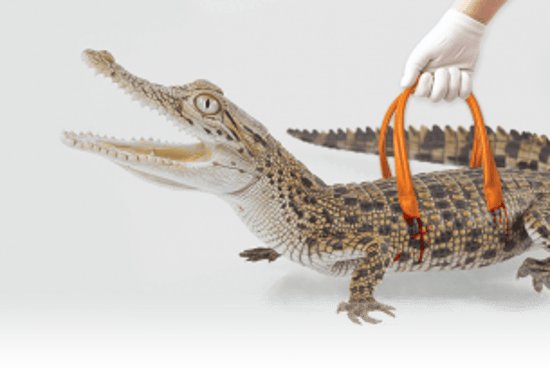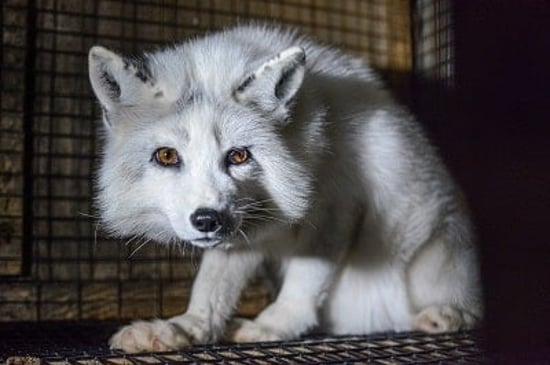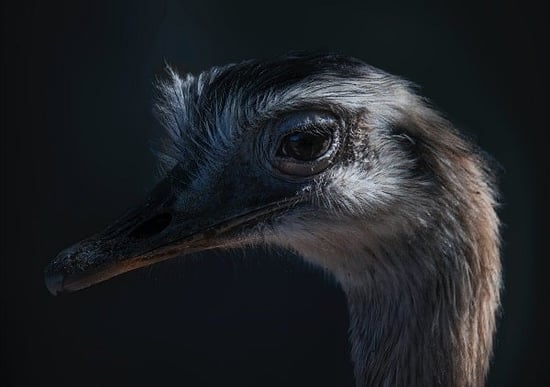
Animal Cruelty in Fashion
Wildlife trade
Header image: Jo-Anne McArthur / We Animals Media
Right now, millions of wild animals are being captured, abused, bred, and mercilessly slaughtered so that the fashion industry can maximise their profit at the cost of these defenceless beings.
Despite the availability of non-animal alternatives that are innovative and humane, wild animals are still being exploited for their skin, fur, and feathers for non-essential luxury fashion items like handbags, coats, belts, and shoes.
These innocent victims of fashion that belong in the wild can barely survive in such cruel and captive environments, let alone thrive. After being kept in substandard conditions that barely allow them to move, they are killed in the most horrific manners as if they are not sentient living beings.
Crocodiles can live up to 70 years in the wild. However, on factory farms they are killed within just two or three short years for their skin, while farmed ostriches can be starved for 24 hours before they are brutally slaughtered for their skins. Wild animals will continue to suffer if we do not act with compassion and choose ethical fashion over fashion that fuels cruelty.
All animals deserve a life free from suffering and pain – a life worth living. And it is time to make conscious fashion choices and ensure that what you wear does not cost an animal their whole life.
Today, you can make a massive difference in the lives of wild animals and help lobby for a kinder, more humane, environmentally responsible and cruelty-free future for fashion.
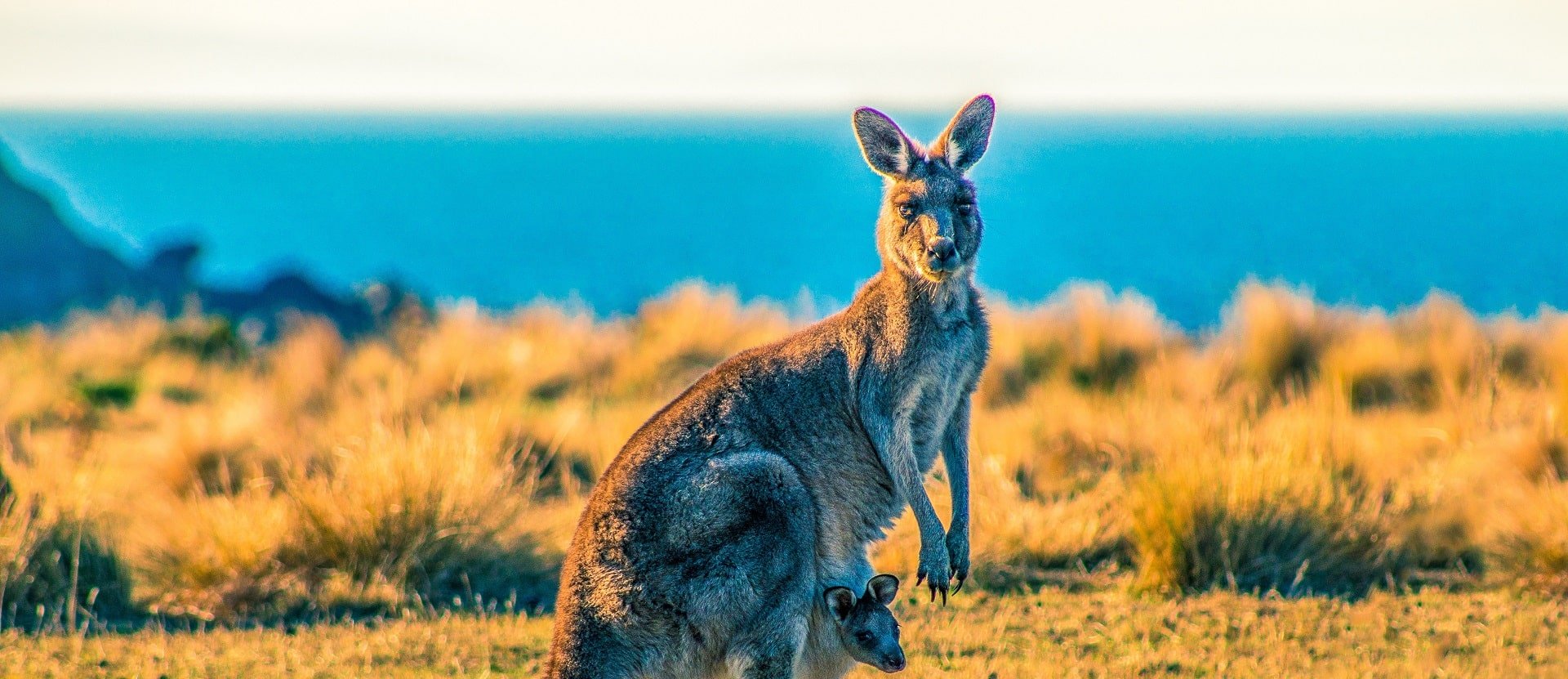
Kangaroos
Image credit: Ondrej Machart / Unsplash
Kangaroos deserve better than being poached for k-leather
Kangaroos are gentle, land-dwelling, wild mammals that usually live in close-knit family groups called ‘mobs.’ These iconic animals of Australia are mainly active at night and early morning to graze, which is typically when they are hunted from a distance – all so their skin can be turned into leather, known as ‘k-leather,’ and be used in non-essential sporting products or as pet food.
Because kangaroos are often hunted in remote locations, there is no real way to effectively monitor animal welfare. Conservative estimates are that about 40 percent of the shots fired by hunters are not immediately fatal. And if the kangaroo manages to escape the clutches of the hunter, he or she ends up suffering a slow and painful death. Sometimes, joeys suffer an inhumane death by blunt-force trauma or are left to fend for themselves if they are still present in their mothers' pouches.
In the last 10 years, over 15 million kangaroos have been killed for the commercial trade, making it the largest commercial hunt of land-based wildlife in the world. This number doesn’t include joeys or other kangaroos who are incidentally wounded and then die, so the death toll is much likely higher.
Ending their lives in the cruellest of manners just to make fashion products such as hats, football boots, ice skates is unjustifiable, especially when there are plenty of non-animal and sustainable alternatives available in the market today.
It is thanks to your relentless support that brands such as Viking and Bol.com have removed kangaroo products from their range. With the support of compassionate consumers like you, we can move the world to protect animals and ensure the usage of wildlife in fashion comes to a halt.

Crocodiles
Image credit: Kindness Project
Crocodiles: the real victims of fashion
Crocodiles have a reputation for being fierce and dangerous, but it is a lesser-known fact that they are also sentient and intelligent beings. The fashion industry, however, treats them as commodities, reducing their lives from 70+ years to just two to three short years, ending their lives in small, barren, plastic-lined pens.
Right now, it’s estimated there are more of these innocent reptiles trapped on overcrowded farms in the Northern Territory of Australia than there are in the wild. Paying the real price of fashion on these farms, crocodiles are electrically stunned, rendering them immobile for several minutes. The nape is then cut to allow them to bleed out, making them suffer for a prolonged period after which their brains are pithed with a short steel rod – a tragic end to their all-too-brief lives. All just to make non-essential luxury products.
A single luxury handbag costs at least three to four crocodiles their precious lives. It’s indefensible to make an animal suffer such unimaginable pain given there are many alternatives available today which are humane as well as innovative.
Together, we can put an end to the commodification and cruel exploitation of crocodiles and create a world where cruelty-free, ethical and conscious fashion is the norm.
Stop crocodile slaughter
Call on the Minister for Environment and Water, Murray Watt, to do the right thing for Australian crocodile welfare.
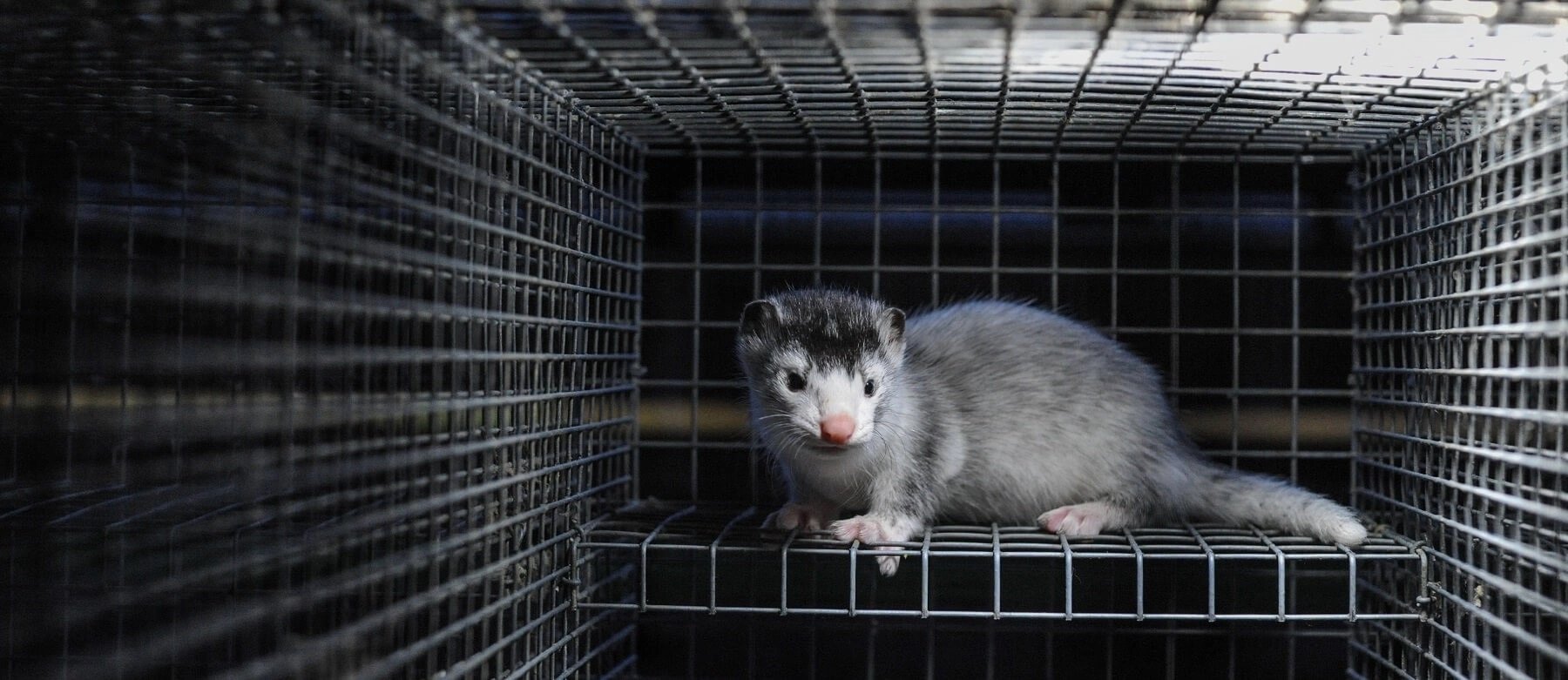
Mink
Image credit: Jo-Anne McArthur / We Animals Media
Mink fur is unfashionably cruel
Mink are solitary creatures who spend most of their lives alone in their natural habitats which are often near water. These semiaquatic mammals, who purr when they are happy, enjoy having their own space and being able to roam free.
Presently, millions of mink are being forced to live in cramped, barren, and highly restrictive wire cages the size of a microwave oven before being brutally slaughtered for their fur, to make non-essential luxury products. Adding to their misery, the selective breeding for fur quality is causing many of them to suffer from genetic disorders such as deafness, blindness or other sensory impairment, or higher susceptibility to diseases.
Europe accounts for 70% of the global mink fur production, with Denmark being its largest producer until 2020 wherein 17 million mink were culled after catching COVID-19. Following that, a temporary ban on mink fur production was imposed by the Danish parliament until the beginning of 2023, which made many mink farmers find new and sustainable businesses such as beer brewing.
If a temporary ban can have such a massive impact, a permanent ban would make a world of a difference to the lives of mink. A life free from needless suffering is possible for minks, and with your help, it is within reach.
Cruelty is out of Fashion
Read our 'Cruelty is out of Fashion' report and learn how millions of wild animals suffer every year for the profits of fashion brands.

Ostriches
Image credit: Emma-Chapman / Scott-Liffen
Ostrich feathers are just as deadly as fur
Ostriches are intelligent and curious birds who typically live with their parents for the first three years of their lives. They are protective of their young and are known to share parental duties with the mother looking after the eggs during the day and the father during the night. These mighty birds have a life span of over 40 years and can move the distance of a mid-sized family car in a single stride.
Every year, tens of thousands of these sentient birds are confined to barren feedlots, often to be brutally live-plucked and then slaughtered at as young as nine months. All for their feathers that can easily be replaced with humane alternatives. On top of this, the feather industry is allowed to legally starve the birds and deny them water for up to 24 hours before slaughter, leaving them stressed before an agonising death. They are often made to travel for as long as eight hours from the feedlot to a slaughterhouse where their lives cruelly end.
Slaughtermen typically stun the ostriches – either with a captive bolt gun or electrically – shackle them, hang them upside down, and then leave them to bleed out. Undercover investigations have revealed that other birds watch as their distressed flockmates struggle during slaughter.
With the availability of humane and innovative alternatives to feathers, there is no reason for wild birds like ostriches to suffer for fashion today. Together, we can call on all fashion weeks, brands, and retailers to adopt strong policies that ban the use of cruel feathers and gives wild birds like ostriches a life worth living.
Feathers are the new fur
Read our 'Feathers are the New Fur' report and learn how wild birds suffer for the fashion industry.




